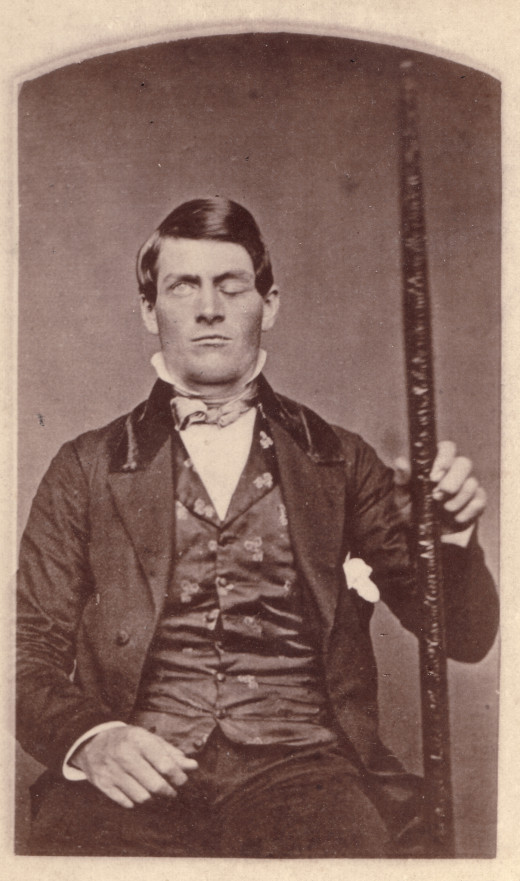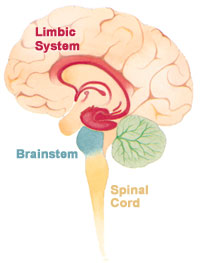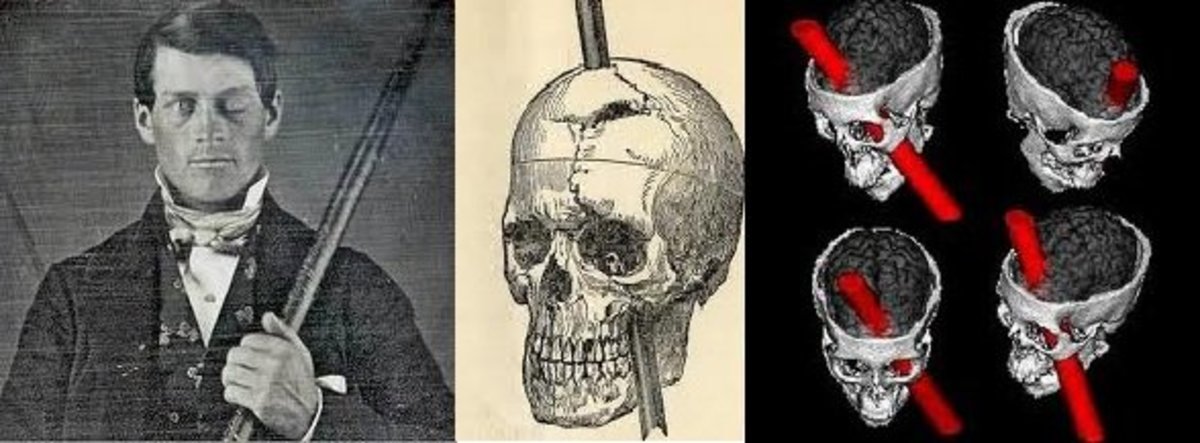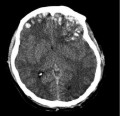Brain Injury and Personality: The Phineas Gage Case

The Accident
Like most men in Cavendish, VT during the fall of 1848, Phineas Gage worked for the railroad. But, unlike some of the other men on the job, Phineas was a natural born leader and was quickly named foreman of the local project. He had the perfect balance of firmness and compassion, and had an uncanny ability to compromise and settle conflicts. He was, by all accounts, a great and personable man. But, on the morning of September 13th, everything would change.
Phineas and his crew had to blast rock in order to make room for the tracks. This process required “tapping” a hole into the rock with a metal rod, setting the gunpowder into the hole, and then lighting a fuse. This gave the workers ample time to leave the area while the rock exploded. But, on this tragic morning, something went horribly wrong. A spark ignited the gunpowder early and sent the “tapping iron”, a 3 and ½ foot iron rod weighting close to 14 pounds, straight through Phineas’ face and out through the top of his head. The iron rod landed 80 yards away.
What happened next surprised everyone; Phineas stood up and asked what happened. How can a man, who just had a large metal spike slice through his brain, defy conventional logic and not only survive, but get up and act “normal”? Lucky for us and the future of psychological research, the doctor who oversaw Phineas’ case, Dr. Edward H. Williams, took copious notes.
Phineas' Condition
Despite the doctor’s notes, many questions remained unsolved until decades later. In the years after his accident, many questions remained: How did he not die? How could he still talk? How could he walk with all but the slightest of limps? But, the biggest question of the time was how could a man with such a great temperament and demeanor, turn into such a “monster”? The biggest change, as indicated by Dr. Williams’ notes, is that Phineas had trouble controlling his emotions; he was mean, inappropriate, and inconsiderate. We now know the answers to these questions and they give us excellent insight into how the brain works.

The Answers
Phineas did not die because he did not bleed very much. The force of the blow was so powerful that it left a relatively clean and smooth wound. There was no excess blood or bone matter to interfere with the brain matter that remained intact. We occasionally see a wound like this in the current media such as a carpenter who has an accident with a nail gun. Usually, they can recover because of the force of the nail gun creates a clean wound. In contrast, someone with a bullet wound is at far more risk for permanent injury because the bullet breaks apart.
Still, with a hole in the head, one would expect there to be drastic consequences. In general there are, but it all depends on what brain parts are impacted. In Phineas’ case, because the spike only impacted his frontal lobe, all of his sensations, memories and language abilities stayed intact, for these are located in other parts of the brain. Although much of it still remains a mystery, we do know that the frontal lobe has a few major functions, one of which is control of our motor skills. All of our skeletal and muscle movements are controlled by a thin strip of tissue in the back of the frontal lobe. But, in the case of Phineas Gage, very little of it was touched by the tapping iron, hence explaining why he could still walk with only a slight limp (he would even use the tapping iron that injured him as a cane).
The second function of the frontal lobe is found in our ability to organize and process information. For example, before we do a puzzle, we may organize the pieces in a way that helps us attack the “problem”. People with certain types of frontal lobe damage can no longer do this; they just jump right into problems without doing any planning. But what does this have to do with Phineas’ change in personality? It’s quite simply actually, what happens if we don’t have the ability to plan and organize our emotions? If we didn’t, what kind of person would we be? Imagine saying everything that crossed your mind. Imagine telling people exactly what you were thinking, all of the time. What would people’s reaction to you be? Without a doubt it would be a negative one, and it would not surprise me if people started labeling you as a monster.

But very few people with frontal lobe injuries act so aggressive towards others, which makes us look at Phineas’ unique injury further. Because of the location of the injury, we now know that he lost the connection between his frontal lobe (organization) and the limbic system, the place in our brain where our most “primitive” emotions lye. Within the limbic system we have our primal thoughts and emotions: anger, agression, sex, hunger, thirst, etc. Without the ability to organize these thoughts and desires, Phineas essentially started acting more like a wild animal than a rationale, civilized human being. If fact, it is also documented that Phineas got along better with animals than humans after his injury.
What Happened To Phineas?
After a brief period after his accident, Phineas lived with his family in New Hampshire, but soon left to join the circus. Soon thereafter, he left for Chile where he drove a stagecoach for a living. Towards the end of his life, he returned to the United States where he settled in San Francisco to be close to his sister. Twelve years after his accident he passed away at the age of 36.
At the request of doctors who knew of his case, his body was exhumed and his skull and tapping iron were presented to the Harvard Medical School Museum, where they remain today.
A Contemporary Phineas Gage
His Place In History
Phineas Gage will forever be remembered in the history of psychology. Not only was his story horrifying and interesting, but his injury was unique. At his expense, we have learned more about the structure of the brain and how it works. .
Be Sure To Check Out My Other Psychology Related Articles
- Examples of The Bystander Effect
The Bystander Effect is a tragic, yet real, part of the human experience. Why do we not help others when they may or may not be in trouble? Video examples of this very interesting psychological concept are provided. - Taking Memory For Granted: The Strange Case of Clive Wearing
Have you ever been frustrated that you can't remember something? This is a common occurance for most humans, yet it's easy to forget how much we take memory for granted. Clive Wearing, the man with no short term memory gives us a glimpse into how imp








